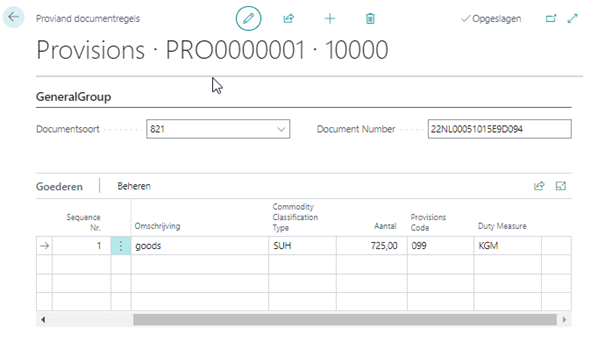5 new customs functionalities in 3PL Dynamics. Get started right away
03 Nov 2022
3 min read
Customs doesn’t stand still, and neither do we! A number of new functionalities have been added to help you as much as possible with the import, export and transit of your goods. These functionalities make your work easier, so that you can make customs declarations quickly and easily.
Discover which 5 customs functionalities are new in 3PL Dynamics. And get started right away!
1. Customs message added
Do you bring provisions or bunkers on board a seagoing vessel? Then you must inform customs with a message. This message is sent via Single Window. You can create the message from a Seafreight import file, which takes over the basic data of the voyage and port of call.

For each document you specify in 3PL Dynamics which goods will be delivered on board.

2. Expansion of import stock
Secondly, the standard import stock has been expanded with customs information.
What has been added?
Trade Document No., Trade Document Line No., Trade Invoice Date, Certificate No., GDB No., Incoterms Code, Incoterms Location, Freight Value, Currency Code, Currency Value, Inland Freight Charges, Currency Code (Insurance), Other Value, Currency Code (Other), Supplementary Units, Modality Code, Evidence Code, Duty Regime Code.
All these fields have been added to the import. They are specific to customs goods.
This allows you to indicate under which data the stock has been entered in the 'old' system. This data is stored with the newly created batch in the table 'Customs Info Batch. This table is directly linked to the lot.
The table can also be used in existing flows. This must be set up in the inbound process. It is possible to store this customs data per document line.

When the status is transferred to the next, it is possible to transfer the basic data such as delivery conditions and freight costs to the 'Customs Info Document'. As a result, when the batch is created, the table 'Customs info batch' will be created.
3. Commodity Code Update
From the import duties table it is possible to adjust the commodity code. When opening the screen, a selection can be made of the commodity code lines, based on the commodity code and taric code. You can supplement this with the additional taric codes and country of origin.

The next screen shows the selection of the selected rules. Here you can check lines and enter new data. This is updated in both the import duties table and the tax information table below the customer item. The old data will be saved and will be given an end date.

4. Composite Goods
When you indicate with the customer item that this item is a composite item, it is possible to indicate the composition in the tax data of the customer item. Here you use the related customer article. In the tax data you can indicate how much (Quantity) and the packaging (Unit code) of this item the composition consists of.
This setting is included in the various customs documents.
5. Among others including
In the transit document it is now also possible to indicate this on the packaging of the document line. Do you tick this box? Then the packaging, the brands and numbers are copied from the line where the number of packaging is entered. The goods description is filled with the required text: number, 'including packages including', followed by the goods description.
More information?
Would you like to know more about developments in the field of customs? Or do you need help? Mail to info@elevate-it.be. Our colleagues are ready to help you out!







